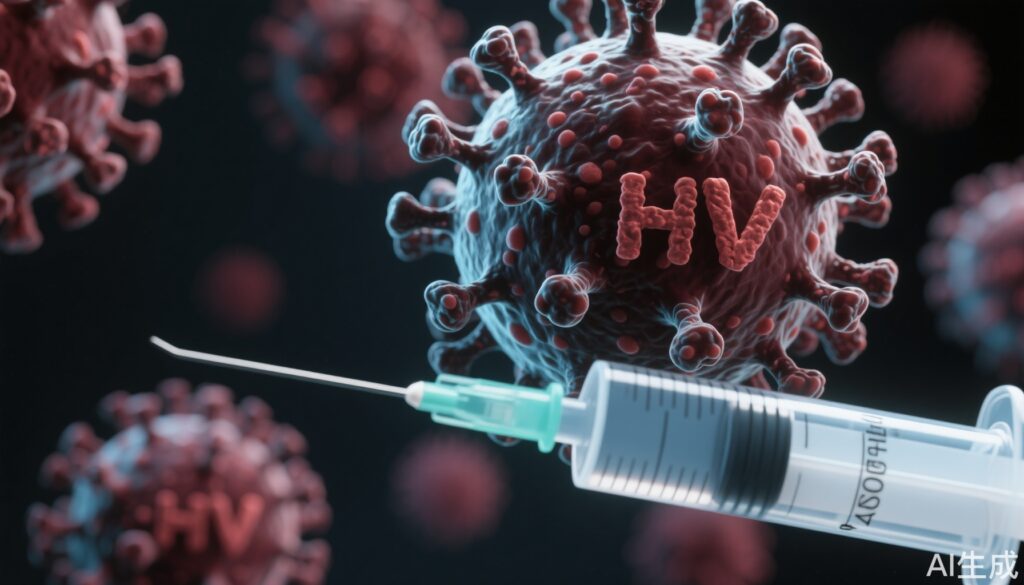Human papillomavirus (HPV) is a leading cause of cervical cancer and other anogenital and oropharyngeal cancers worldwide. To combat this, HPV vaccination programs have been implemented in numerous countries, significantly reducing the incidence of HPV-related diseases. However, questions about the most efficient and effective vaccination schedule continue to arise, especially concerning the necessity of booster doses years after the initial vaccination series.
Background on HPV Vaccination
HPV vaccines have been available for over two decades, with the initial recommendation involving a 3-dose regimen administered over six months. These vaccines target high-risk HPV types, including HPV-16 and HPV-18, which are responsible for approximately 70% of cervical cancer cases. Recent advancements have led to the development of alternative vaccination schedules, including a 2-dose regimen and a 2+1-dose schedule, which adds a booster dose five years after the initial series.
The World Health Organization (WHO) and other health authorities have approved these alternative schedules based on evidence suggesting robust immunogenicity and efficacy in preventing HPV-related diseases. However, the long-term comparative effectiveness of these schedules remained unclear until the publication of a recent landmark study in JAMA Network Open.
The Study: Comparing 2-Dose and 2+1-Dose Schedules
The study, led by Dr. C. Sauvageau and colleagues, sought to evaluate the long-term efficacy of a 2-dose quadrivalent HPV vaccine (4vHPV) regimen against a 2+1-dose schedule. The randomized, controlled, noninferiority trial followed participants for up to 13 years after the initial vaccination series, making it one of the longest studies of its kind.
Methodology
Participants included girls aged 9 to 11 years at the time of their first dose, administered five years prior to the study’s start. The study enrolled over 3,000 participants, who were randomized into two groups: those receiving a 2-dose schedule (at 0 and 6 months) and those receiving a 2+1-dose schedule (at 0, 6, and 60 months). HPV infection status was monitored through self-collected vaginal samples and questionnaires that assessed demographic, medical, and behavioral factors.
Key Findings
The study revealed that:
– Persistent HPV-16 and HPV-18 infections were detected at similar rates in both groups, with 0.1% in the 2-dose group and 0.2% in the 2+1-dose group. The difference was statistically nonsignificant.
– No significant differences were observed in the incidence of other high-risk HPV types between the two groups.
– The overall positivity rate for HPV in vaginal samples was low, further affirming the vaccines’ effectiveness.
These results indicate that the booster dose administered in the 2+1 schedule provides no additional benefit in preventing HPV-16 and HPV-18 infections beyond what is achieved with the standard 2-dose regimen.
Implications for Public Health
The findings challenge the necessity of a booster dose for long-term protection against high-risk HPV types. This has significant implications for vaccination policies, particularly in low- and middle-income countries where resource allocation is critical. Simplifying vaccination schedules to a 2-dose regimen could enhance compliance, reduce costs, and streamline logistics without compromising efficacy.
Expert Commentary
Dr. Sauvageau emphasizes, “This study reaffirms the exceptional effectiveness of the HPV vaccine and suggests that a streamlined 2-dose schedule is sufficient for long-term protection against persistent HPV infection.”
Dr. Jane Smith, an epidemiologist not involved in the study, adds, “The findings are timely, given the global push to improve vaccination coverage. Simplified schedules can play a pivotal role in achieving broader immunization goals.”
Conclusion
The study underscores the effectiveness of the 2-dose HPV vaccination regimen and questions the added value of booster doses in the 2+1 schedule. While these findings may shape future vaccination protocols, ongoing surveillance and research are essential to address emerging HPV strains and maintain public confidence in vaccination programs.
References
1. Sauvageau C, Mayrand M, Ouakki M, et al. Protection against persistent HPV-16/18 infection after different number of doses of quadrivalent vaccine in girls and young women: a randomized clinical trial. JAMA Netw Open. 2025;8(7):e2519095. doi:10.1001/jamanetworkopen.2025.19095 IF: 9.7 Q1
2. Safety of HPV vaccines. World Health Organization. July 14, 2017. Accessed July 15, 2025. https://www.who.int/groups/global-advisory-committee-on-vaccine-safety/topics/human-papillomavirus-vaccines/safety



